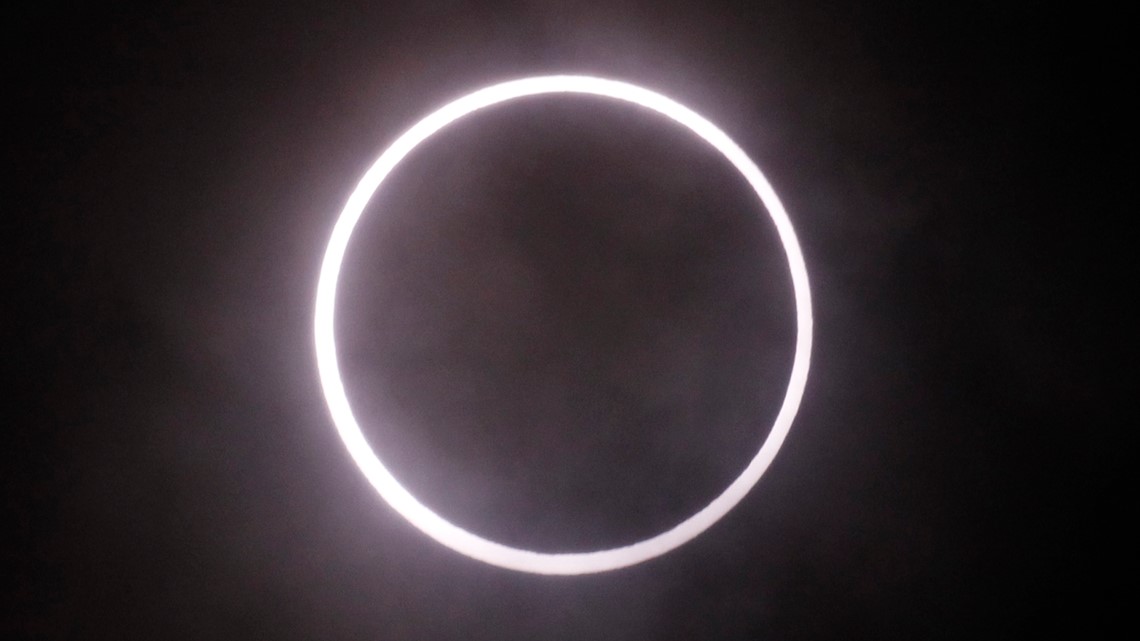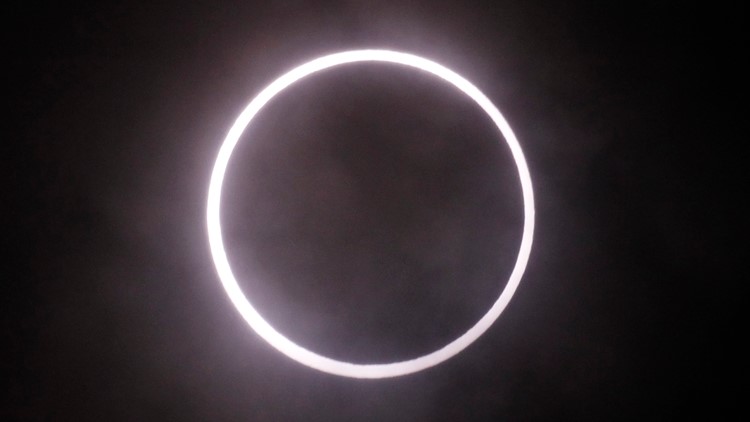While sky watchers kept track of Santa on Christmas Eve, there's another big celestial event set to wrap up Christmas Day. No, it's not Santa taking off on another go around the world, it's a solar eclipse.
A rare annular solar eclipse is happening Thursday in the Eastern Hemisphere. But if you don't happen to live in a place where it'll be visible, like the Middle East or Asia, you can watch it online.
The Dec. 26 solar eclipse is the last eclipse of the decade and will be an annular eclipse. According to NASA, an annular eclipse is when the moon passes directly between the Earth and the sun but it's too far from Earth to completely cover the sun.
So instead of completely blocking the sun's light, the sun appears as a "blindingly bright ring surrounding the moon." That's why an annular eclipse is also known as a "ring of fire" eclipse.
According to Timeanddate.com, the annual solar eclipse will begin on Christmas at 9:29 p.m. EST as a partial solar eclipse, then make its first peak as a "ring of fire" at 10:34 p.m. EST in Saudi Arabia. The eclipse will end at 3:05 a.m. EST. The visibility path of the "ring of fire" will move across cities in India, Sri Lanka, Singapore, Indonesia and Guam over the course of a few hours.


In this case, the ring effect will last the longest, about 3 minutes and 40 seconds, near the Indonesian island of Pulau Gin Besar, according to Space.com.
There are several webcasts that will be showing coverage of the eclipse.
Slooh, which provides membership access to telescopes around the world, will launch its coverage at 10 p.m. EST featuring live feeds from the Middle East and Singapore.
Another option is Tharulowa Digital, featuring views from the Institute of Astronomy in Sri Lanka, according to Space.com.
The YouTube site CosmoSapiens will also have a live stream for the annular solar eclipse.




